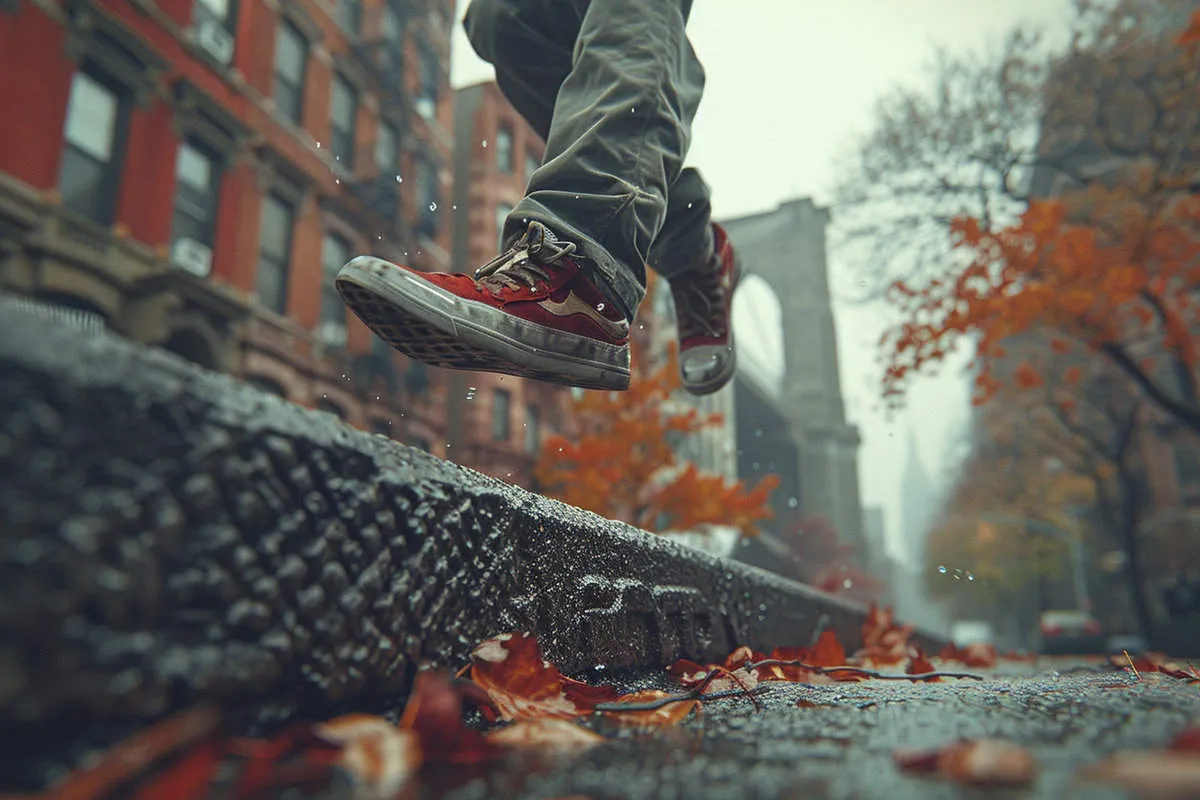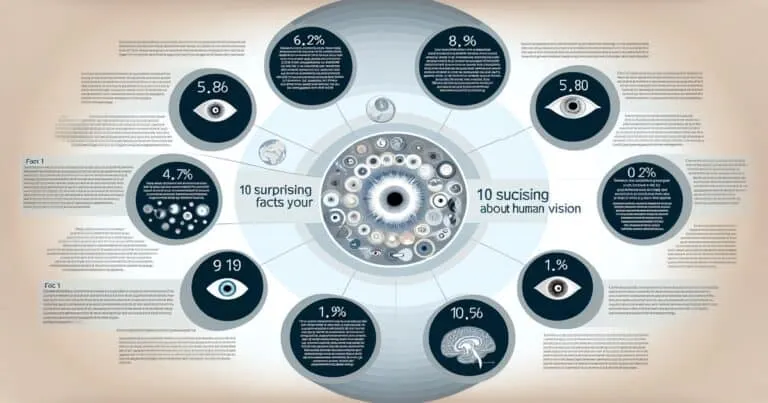Parkour Free Running Facts: Origins, Culture & Global Impact
Parkour free running turns the world into an adrenaline-pumping playground, showcasing jaw-dropping flips and leaps that defy gravity. This sport blends creativity, physical prowess, and a dash of daredevil spirit, making it more than just a workout—it’s an art form.
From scaling towering structures to mastering precision jumps on narrow ledges, practitioners push the limits of what’s possible.
If you’re intrigued by this blend of athleticism and adventure, you’re in for a treat. Dive into our list to discover fascinating facts about parkour free running that will have you looking at your cityscape in a whole new light. Scroll down to get the lowdown on our top picks!
1. Origins in French Military Training
Parkour, a thrilling mix of flips and agility, has its roots deeply embedded in military training courses. Developed to enhance soldiers’ physical abilities, it was inspired by the challenging obstacle course training designed for the French military.
The early techniques of parkour were heavily influenced by Georges Hébert’s “Natural Method”. Hébert, fascinated by the efficiency and movement of indigenous tribes he observed during his travels, aimed to incorporate these natural movements into a comprehensive training method.
His philosophy was simple – train the body to move with speed, strength, and efficiency through complex environments.
This form of practice wasn’t just about physical prowess; it also focused on developing moral qualities such as courage and altruism among practitioners. The idea was to prepare individuals not only physically but also mentally for any challenges they might face.
Over the years, what started as a rigorous military exercise evolved into parkour free running—a dynamic sport enjoyed by groups around the world. From its name derived from ‘parcours du combattant’, the classic obstacle course training in military education, parkour has become synonymous with freedom of movement and expression.
2. David Belle: The Founder of Parkour
David Belle is known as the man who started parkour. It all began in the late 1980s when he looked at how his father, Raymond Belle, trained. His dad was in the military and used to do exercises that were about moving quickly and efficiently.
Parkour is not just running around; it’s about getting past obstacles in the fastest way possible. Imagine you’re playing a video game where you have to jump over things or climb walls to get to the next level – that’s kind of what parkour is like.
David took what he learned from watching his dad and added his own ideas. He thought it was important not only to move fast but also to do it smoothly and without wasting any effort.
Today, many people practice parkour all over the world. They jump over benches, climb walls, and even leap between buildings! But they always remember David Belle’s main point: be quick but also be smart about how you move.
3. “Parkour” vs. “Free Running”: A Distinct Difference
When we talk about parkour, think of it as the most efficient way to move from point A to B using your body. Parkour practitioners leap over walls, climb structures, and sprint through urban landscapes focusing on speed and efficiency.
On the other hand, free running is like parkour’s artistic cousin. It takes the basics of parkour but mixes in flips, spins, and acrobatics for flair and personal expression. Where parkour maintains a straight line of movement aimed at practicality, free running breaks away with creative movements that might not be the fastest route but are visually impressive.
The main difference lies in their purpose:
- Parkour is all about utility—getting somewhere quickly using your body.
- Free Running, however, is more about self-expression through motion; it’s an art form where practitioners show off their creativity and agility.
Imagine seeing someone effortlessly jumping across rooftops—that’s parkour. Now picture another person doing backflips off those same roofs—that’s free running!
4. The Philosophy of “Be Strong to Be Useful”
The philosophy behind parkour, “Be Strong to Be Useful,” is not just about jumping from one rooftop to another. It’s a deeper idea that encourages practitioners to develop their skills not only for personal growth but also to be useful and help others in need.
This concept stresses the importance of both physical and mental strength. In parkour, being physically strong means you can overcome obstacles efficiently. But mental strength? That’s about facing fears and making quick decisions under pressure.
The roots of this philosophy trace back to David Belle, the founder of parkour, and his father’s teachings. They believed that the true power of parkour was in its ability to empower individuals – making them capable helpers in emergencies or when someone needs assistance.
Imagine seeing someone leap gracefully over barriers with ease – it’s awesome, right? But now think about those same skills being used for something greater like aiding during natural disasters or community crises. That’s where the real wonder lies.
5. Parkour’s Global Spread and Popularity Surge in the 2000s
Internet videos were like a magic wand for parkour, making it fly from rooftops in France to screens worldwide. People saw others jump, flip, and dash through urban jungles and wanted to try it too. These videos weren’t just cool; they were inspirational.
Movies, TV shows, and advertisements caught onto this trend quickly. Remember that scene where James Bond chases a bad guy doing crazy jumps? That was parkour in action! It showed up on small screens too, with characters in popular series suddenly displaying their agility. Even commercials used parkour to sell everything from shoes to soft drinks, making the movement seem as cool as flying.
But what really made parkour stick wasn’t just seeing it; it was doing it. Local communities sprouted like mushrooms after rain across the globe. Friends would meet up at parks or city centers to practice together, each leap bringing them closer not only physically but socially.
- Internet sharing platforms: YouTube became a digital playground for aspiring traceurs (parkour practitioners).
- Movies/TV Shows: “Casino Royale,” “The Office,” and more showcased thrilling parkour scenes.
- Local Communities: From London’s concrete estates to Tokyo’s bustling districts, groups gathered regularly.
6. Influence on Popular Culture and Media
Parkour has leaped from the streets into the heart of popular culture and media, captivating audiences worldwide. One of the most memorable moments in action cinema is the parkour chase scene in “Casino Royale.” This film showcased parkour’s thrilling potential to millions, illustrating how it can elevate action sequences with its fluidity and intensity.
Video games have also embraced parkour, using its mechanics to create more immersive experiences. “Assassin’s Creed” is a prime example, where players navigate ancient cities with breathtaking agility. The incorporation of parkour allows gamers to explore environments in ways that feel natural and exhilarating.
Reality TV isn’t left behind either. Shows and competitions dedicated to showcasing parkour talents bring this sport into living rooms around the globe. These programs not only entertain but also inspire others to learn about and possibly take up parkour themselves.
7. The Role of Yamakasi in Parkour’s Early Development
Yamakasi, a group formed by David Belle and his friends, was crucial in spreading the word about parkour. They weren’t just about doing cool moves; they had a deeper philosophy. This group believed strongly in humility, respect, and discipline. It wasn’t just about being physically strong but also having strong character.
Their approach to parkour was revolutionary at the time. Instead of keeping their skills to themselves, they wanted everyone to know about it. They showed that parkour wasn’t just for show-offs but could be a way of life that made you better on the inside and out.
Then came their big break – starring in the film “Yamakasi.” This movie took what was once a niche hobby and put it on screens all around the world. Suddenly, people who had never even heard of parkour were seeing these incredible feats right before their eyes.
The impact of this movie cannot be overstated. It didn’t just make stars out of the Yamakasi members; it introduced parkour to countless new fans across different countries and cultures.
8. Parkour in Competitive Sports: Red Bull Art of Motion
The Red Bull Art of Motion stands out as a key international parkour competition. In this event, athletes leap and run through obstacle courses, showcasing their best moves. What makes it special is how competitors are judged. They’re scored on three main aspects:
- Flow: How smoothly they move from one action to another.
- Creativity: The uniqueness and inventiveness of their routines.
- Execution: The precision and skill with which they perform each movement.
This competition has played a significant role in pushing parkour into the spotlight as a competitive sport. It’s not just about getting from point A to B; it’s about doing so with style, efficiency, and creativity.
Participants come from all over the world to demonstrate their skills in front of an enthusiastic crowd. This gathering spotlights the physical education aspect of parkour, emphasizing strength, agility, and spatial awareness.
Moreover, events like the Red Bull Art of Motion help change public perception of parkour. It’s seen less as reckless stunts and more as a disciplined form of physical artistry.
9. Safety and Ethical Practices in the Parkour Community
Practitioners of parkour take safety seriously. They often start with basic moves and gradually progress to more complex ones. This careful approach helps them minimize the risk of injury. Think of it like learning to walk before you run.
Respect for where they practice is also a big deal in the parkour community. Whether it’s a bustling cityscape or a quiet neighborhood, practitioners make sure not to damage property or disturb peace. It’s all about blending into the environment without leaving negative marks behind.
The parkour community is known for being incredibly supportive. Newcomers are welcomed with open arms and encouraged every step (or leap) of their journey. More experienced practitioners often share tips and tricks, helping others grow their skills safely.
- Progressive Training: Start simple, get better safely.
- Respect Spaces: Treat public and private areas with care.
- Supportive Environment: Everyone helps everyone else improve.
10. The Emergence of Parkour Parks and Designated Training Areas
Around the world, there’s been a noticeable increase in specially designed parkour parks. These areas are like playgrounds for those who practice parkour, filled with obstacles that mimic urban structures. This setup allows for safe practice away from the hustle and bustle of actual city streets.
What makes these parks stand out is their inclusivity. They encourage accessibility for both beginners and advanced practitioners alike. Imagine stepping into a space where you can leap over walls or vault across bars without worrying about traffic or pedestrians.
These designated training spots come equipped with various obstacles meant to test and improve different skills essential to parkour – balance, strength, agility, and precision among them. From towering walls to intricate railings, each element serves as both a challenge and a point of learning.
The beauty of these parks also lies in their community aspect. They become gathering places where individuals share tips, celebrate progress, and sometimes even collaborate on documentary projects showcasing their skills.
Frequently Asked Questions
What’s the difference between parkour and free running?
Parkour focuses on efficiency in getting from point A to B, using obstacles as a path. Free running is more about self-expression through movement, adding flips and tricks into the mix. Think of parkour as the straight line and free running as the stylish curve.
Who started parkour?
David Belle is credited with founding parkour in France during the 1990s. His inspiration? Military obstacle course training techniques combined with his desire for a new way to navigate urban environments.
Why was parkour created?
Originally developed from military training methods, parkour was created to empower individuals. It’s built on being physically and mentally strong so you can be useful—to help yourself and others in challenging situations.
Has parkour influenced popular culture?
Absolutely! Parkour has leaped into movies, TV shows, video games, and advertisements since its surge in popularity during the 2000s. It’s thrilling to watch which makes it perfect for spicing up action scenes.
What are “parkour parks”?
Parkour parks are specially designed areas that offer a variety of structures for practitioners to train on safely. They’ve become urban playgrounds where traceurs (parkour practitioners) hone their skills without dodging city traffic or trespassing.
Is there competitive parkour?
Yes! Events like Red Bull Art of Motion showcase competitive freerunning. Athletes perform jaw-dropping runs, judged on creativity, flow, and difficulty level among other factors.





